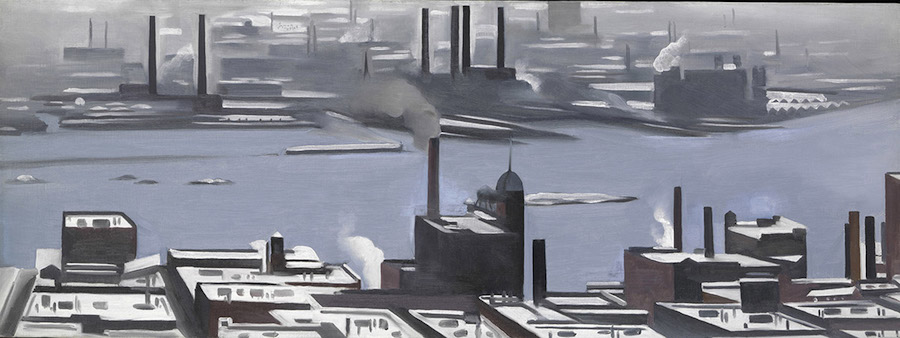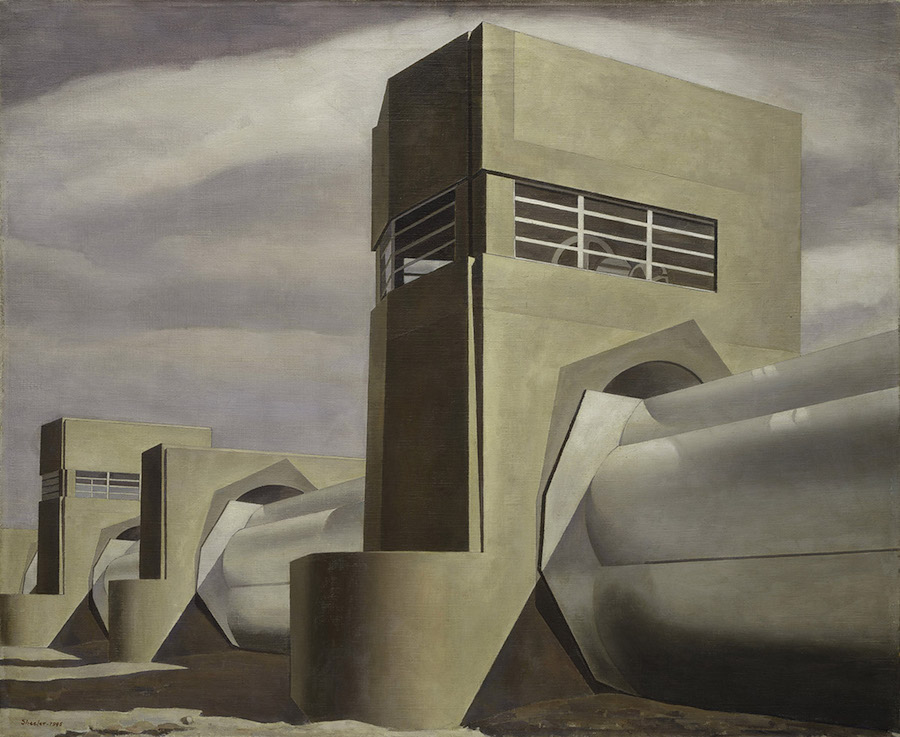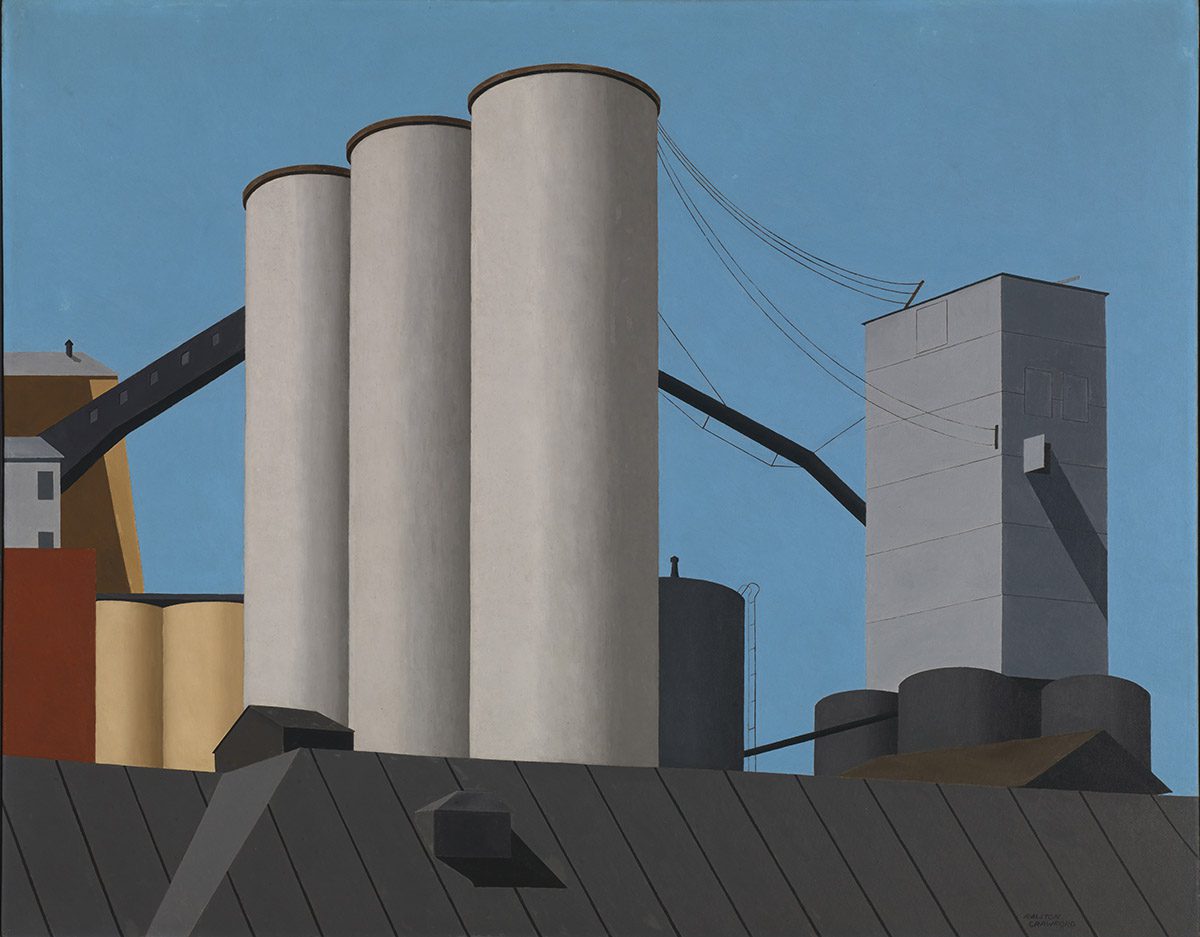As Duchamp stated in 1915; “America is the country of the art of the future. Look at the skyscrapers! Has Europe anything to show more beautiful than this?” With Francis Picabia stating that machinery was the soul of the modern world. The Ashmolean Museum’s latest exhibition examines this early 20th century American pride and optimism; but also touches on something potentially frightening about the Precisionist painters’ expression of that ‘Modernist soul’.
‘America’s Cool Modernism’ takes the viewer on an impressive narrative journey through the works of famous painters and photographers of the 1920s and ‘30s including early paintings by Georgia O’Keeffe; photographs by Alfred Stieglitz, Paul Strand and Edward Weston; and ends with the melancholy of Edward Hopper’s cityscapes.
The show also highlights two modern American artists whose work is less well known in the UK, Charles Demuth, and particularly Charles Sheeler, including his work ‘Americana’, 1931, which has never been lent outside of the United States.

Charles Demuth, ‘I Saw the Figure 5 in Gold’, 1928. America’s Cool Modernism, installation view, Ashmolean Museum. Photo: P A Black © 2018.
This modern optimism is highlighted by Charles Demuth’s work ‘I Saw the Figure 5 in Gold’, 1928 – not the only work on display that anticipates Pop Art – dedicated to the poet William Carlos Williams – from the lines ‘Among the rain and lights, I saw the figure 5, in gold, on a red firetruck …’. But the artist’s shining symbol of Abstract hope, soon gives way to a ‘cooler’ ambivalence.
All of the artists on display express ‘modern’ with a fascinatingly detached eye; this was the new American aesthetic and the Precisionist movement of the period considered itself to be strictly American, and reluctant to acknowledge the European influences of Cubism and Futurism.
This precise and detached aesthetic can be seen throughout the works; and is at the centre of the curatorial narrative, beginning with a focus on objects, restricting, eliminating, and reducing the painterly form; which is later employed in the Precisionist’s representation of the modern dehumanised landscape.
These landscapes, whether cityscape or the newly industrialised agricultural landscape – as with Ralston Crawford’s featureless work of modern purity ‘Buffalo Grain Elevators’, 1937 – are for the most part completely devoid of any human narrative, only later do we end with Edward Hopper’s isolated figure, in his 1928 picture ‘From Williamsburg Bridge’; sitting in the window of an otherwise empty cityscape, framed by an expansive absence of humanity.
With Hopper, the cityscape had found its poetry, and it was one of alienation: a criticism of a ‘de-natured society’, a Precisionist view of order designed to hide disorder.

As with Charles Sheeler’s ‘MacDougal Alley’ 1924 – a geometrically rendered view from the artist’s window in Greenwich Village, or O’Keeffe’s ‘East River From The Shelton Hotel’, 1928 – the absence of human incident or activity is the celebration of the new American landscape; a clean and ordered Modernist geometry, with skyscrapers touching the heavens – it was the Modernist dream fulfilled – a vision not to be polluted with the chaos of human activity.
But at the same time, these cityscapes can be seen to represent human isolation and a modern anxiety; and perhaps a loss of personal identity, swallowed by Picabia’s Modernist machine.

Image: Charles Sheeler, ‘Water’, 1945. Metropolitan Museum of Art, New York © Estate of Charles Sheeler.
Finally with Charles Sheeler’s work ‘Water’, 1945, the cool depiction of a brand new hydroelectric plant, the painting is both literally and metaphorically ‘dry’, with no water visible and a total absence of any human narrative; this is a picture ‘built’ by the artist in the name of progress, the modern metropolis rendered pristine – and rather frightening – as the viewer questions that total lack of a human presence or narrative – and as we look on, still buoyed by this geometrically clean Modernist dream, all the while the machines – the new modern soul – conspire to take over the world.
Words: Paul Black @Artjourno, photo: P A Black © 2018
Lead image: Ralston Crawford, ‘Buffalo Grain Elevators’, 1937. Smithsonian American Museum, Washington DC © Ralston Crawford Estate/VAGA, New York/DACS, London, 2018
America’s Cool Modernism: O’Keefe To Hopper – Ashmolean Museum – Until 22 July 2018
More Reading on American Modern Art

